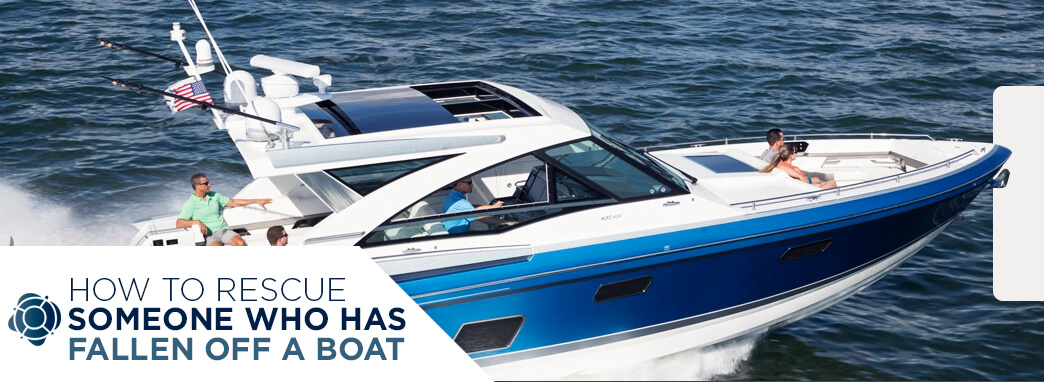
Boating is the perfect pastime for enjoying the sunshine, spending quality time with family and friends and relaxing on the water. Recreational boating continues to gain popularity in the U.S., with about 280,000 new powerboats purchased in 2018 and a total of 12 million total recreational boats registered.
As more people head out on the water this season, it’s important to keep boating safety in mind. Experienced boaters know that good preparation can save the day when the unexpected happens. One of the most common emergencies that boaters face is a person falling off the boat. In their most recent Recreational Boating Statistics, the U.S. Coast Guard reported that there were 306 falls overboard in 2017, resulting in 179 deaths and 126 injuries.
To prevent the unthinkable from happening, boaters should be prepared for a man overboard situation before an emergency situation strikes. In this piece, we will teach you what to do if a passenger falls off your boat and the correct man overboard procedure to rescue the person quickly and safely.
What to Do If You Go Overboard
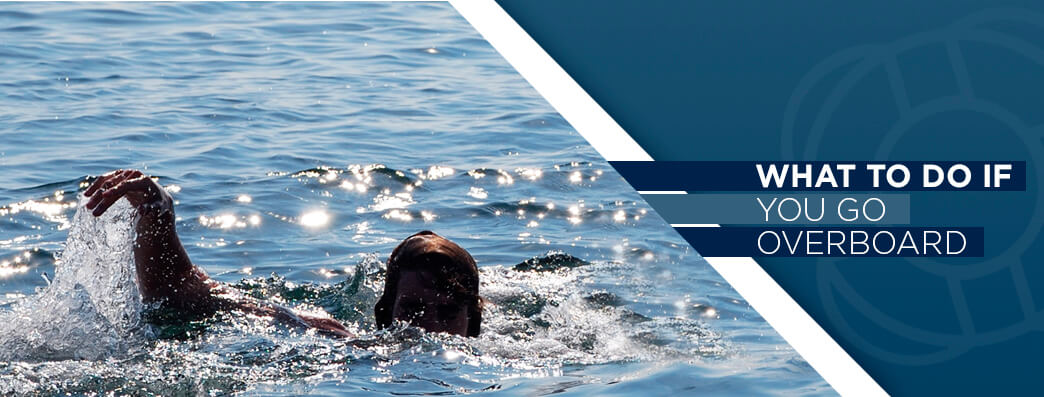
Going overboard can be a frightening experience, but the best thing you can do is remain calm and try to make it easier for the boat to retrieve you. If you fall overboard, use these boating safety tips to get the boat’s attention and stay afloat until you are rescued:
- Make yourself visible: In choppy water, it can be difficult to spot a person who has fallen off of a boat. Make yourself as visible as possible by splashing around, waving your hands and whistling to the boat. The sooner the boat is able to spot you, the quicker they can rescue you.
- Utilize colorful clothing: If you are wearing a brightly colored jacket, pull the hood over your head to help you stand out from the water. You can also wave other articles of colorful clothing if possible to get the boat’s attention.
- Stay where you are: Resist the temptation to chase after the boat if you fall overboard. You will not be able to catch up and will only waste energy. Swimming around can also make it more difficult for the boat to locate you.
- Conserve your energy: Depending on how quickly the boat can get back to you, you may need to wait in the water for a long time. Try to save your energy by floating so that you still have strength left to help pull yourself out the water when the boat returns.
- Remove heavy clothing: If you are wearing any heavy clothing like boots, shoes or a coat, remove these to make it easier to stay above water. If your shoes float, you can tuck them under your armpits to use as a flotation device.
- Use your clothing to float: Trap air inside of your clothes by blowing into your shirt with it tucked into your pants or tied tightly at the bottom. Pants can be made into a flotation device by taking them off, tying the legs together and then pulling them above your head and back into the water while gripping the waist. Close the waistband tightly with a knot or with your hands to trap air inside the pants and create a makeshift flotation device.
- Preserve body heat: In cold water, preserving as much body heat as possible can help prevent hypothermia and preserve energy. Keep your head out of the water and covered with a hood if you have one. If you are wearing a life jacket, pull your knees toward your chest, cross your ankles and cross your arms over your chest to trap body heat.
You can also take safety precautions before the boat leaves the shore to be prepared should you fall into the water. Wear bright clothing when boating and avoid any clothing that could become tangled or drag you down in the water.
If you cannot swim, wear a life vest every time you are on a boat to prevent a fatal accident. Children should also wear life jackets at all times while out on the water. The U.S. Coast Guard reports that drowning is the number one known cause of fatalities in recreational boating accidents, and 84.5% of drowning victims weren’t wearing a life jacket when the accident occurred.
Also, avoid consuming alcohol while boating or before boating, as this can impair your physical abilities and make you more likely to fall overboard. According to U.S. Coast Guard statistics, alcohol use was a primary contributing factor in 102 deaths in recreational boating accidents in 2017 and accounted for 19% of all boating fatalities with a known cause.
What to Do If Someone Falls off Your Boat
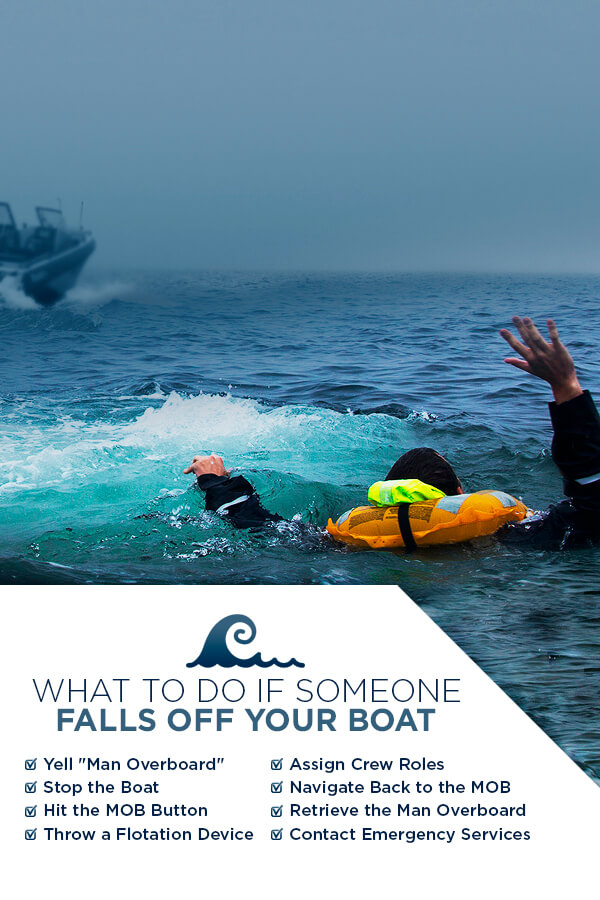
A person can go overboard for a variety of reasons — rough waters, bad weather, reckless behavior or a true accident. But regardless of the cause, you need to know what to do if a passenger falls off of your boat. By having a man overboard procedure in place before an emergency strikes, you can retrieve the person from the water swiftly and safely. Follow these steps for rescuing a man overboard:
1. YELL “MAN OVERBOARD”
Immediately after a person goes overboard, alert the rest of the crew on the boat by shouting “man overboard.” Keep your eyes on the person and do not lose sight of them in the water. Use correct boating terminology and yell “port side” or “starboard side” so other passengers and the helmsman know where the person is. The passengers can help keep the person in their line of vision, while the helmsman steers the boat’s propellers away.
Shouting “man overboard” also lets the person know that you saw them fall off of the boat and will be returning to rescue them.
2. STOP THE BOAT
If you do not know where the person fell into the water or if there is any risk that they may be injured by the boat’s propellers, cut the engine immediately. If you stop the boat fast enough, you may be able to pull the person from the water right away, without having to bring the boat back. Turning off the engine also makes it easier for you to hear the person shouting or whistling.
The farther the boat goes before you realize a person has gone overboard, the longer it will take to locate and rescue them. However, if you have already passed the person, proceed with turning the boat around to go back and get them. Stopping the boat when you are already away from the person will only slow down the rescue effort.
3. HIT THE MOB BUTTON
If your boat’s GPS has a man overboard (MOB) button, hit it as soon as you realize someone has fallen overboard. The MOB button will mark the original location where the person went overboard to help you navigate back to them. However, your GPS will not account for any currents pushing the person, so it is still crucial to maintain a visual on them at all times.
4. THROW A FLOTATION DEVICE
If you are close enough to the person and have already stopped the boat, throw a flotation device with a cord attached and pull them back to safety. You may even be able to reach the man overboard with a pole or rescue tube if they are close to the edge of the boat.
Even if the boat has already passed the person, throw them a flotation device like a ring buoy or life jacket. They can use the device to remain above water until the boat gets back to them. Bright colored flotation devices also make it easier to keep track of the person’s location in the water.
5. ASSIGN CREW ROLES
As you prepare to navigate the boat back to the person in the water, quickly delegate tasks to each passenger on the boat to assist with rescuing the man overboard. By taking control of the situation and keeping everyone organized, you reduce panic and increase your chances of rescuing the person safely. Here are a few tasks to assign when addressing a MOB situation:
Keep a visual: Perhaps the most important factor in rescuing a man overboard is to always keep a visual on them. Assign at least one passenger to watch the person closely and point to them in the water at all times. The crew member keeping a visual can help the helmsman steer back to the person’s location as well as raise alert if their condition changes, such as sinking underwater or becoming unconscious.
Take a headcount: Assign another crew member to take a headcount of everyone on the boat. This will confirm that only one person has gone overboard and allow you to identify who is missing.
Warn other boats: If you are in an area with other boats around, assign someone to alert other boaters of the situation. As the helmsman turns the boat to protect the person in the water, this crew member should visually signal to other boats that there is a man overboard.
Contact emergency services: If the situation is life-threatening, such as a person falling overboard during a storm or if they appear to be unconscious or injured, tell someone to contact emergency services immediately. Using a marine VHF radio, announce “mayday” three times on channel 16 and state that there is a man overboard. Provide your location, a description of your boat and a description of the person in the water so the coast guard can locate your boat quickly.
Any additional crew members should assist in keeping a close visual on the person. When the boat reaches the man overboard, all crew members should be positioned to help pull the person out of the water.
6. NAVIGATE BACK TO THE MOB
When navigating the boat back to the person, care must be taken not to endanger them with the propeller or sail over the top of them. In 2017, at least one person was struck by a boat propeller in 172 boating accidents. These accidents resulted in 162 injuries and 31 fatalities. To prevent fatal consequences, the helmsman must use the right strategy to navigate to the person in the water. Here are three options for approaching a man overboard safely:
Approach from downwind: In most MOB situations, the safest way to approach is from downwind. You will have more control over your boat with the bow pointing into the waves and wind and will be able to reach the person swiftly. Navigate the boat next to the person and shut off the engine when you are close enough to toss them a line.
Drift from upwind: If you have a smaller boat with low free board, you may be able to stop your boat upwind of the victim and drift down to them. With the other passengers ready to pull the victim from the water, throw a line as your drift beside the victim.
Use a retrieving line: When using a retrieving line or life sling, you can slowly circle the person with the line floating behind the boat. When they are able to reach the line, stop the boat and pull them in.
When navigating back to the victim, use caution and approach slowly. This is especially important if the water is rough, the wind is strong or visibility is poor. Make sure you always know where the person is in the water as you approach. It is often safest to stop the engine as soon as you are close enough to toss them a flotation device with a line.
7. RETRIEVE THE MAN OVERBOARD
If the person is conscious and able to climb, the safest way to retrieve them from the water is with a swim platform or boarding ladder. Throw them a flotation device with a towline attached and pull them to the ladder or platform. The person can then climb back into the boat safely.
If your boat does not have a ladder but has a low free board, pull the person to the side of the boat and have them face toward the boat. Grip both of the person’s wrists and instruct them to do the same with yours. Smoothly and swiftly pull the person straight out of the water.
When pulling a person from the water by hand, lower your center of gravity so that you do not also go overboard. If there are other passengers on board, they can assist by holding onto your waist or legs to stabilize you. Two people can also pull the person in the water out together, with one hand holding the person’s wrist and the other hand holding onto the boat for stability.
If the person is unconscious or cannot lift their own weight, you may need to use a life sling to retrieve them. You can also lift the person by grabbing them underneath the armpits.
Avoid entering the water to retrieve the person unless absolutely necessary. If the person is panicked, they could drag the rescuer underwater or cause further injury. Only enter the water if you are a strong swimmer and the water and weather conditions are favorable. Wear a life vest and take a flotation device with you when you swim to the person. Keep the flotation device between them and yourself as you pull them back to the boat.
8. CONTACT EMERGENCY SERVICES
If the situation seems life-threatening at any point, do not hesitate to contact emergency services. Issuing a mayday will inform nearby boats that there is a man overboard and alert the coast guard or other emergency services that you need assistance. With 658 fatalities and 2,629 injuries caused by recreational boating accidents in 2017 alone, it is always better to be safe than sorry. If you are able to rescue the person safely before help arrives, you can simply radio again to cancel the mayday.
Tips to Prevent People From Going Overboard
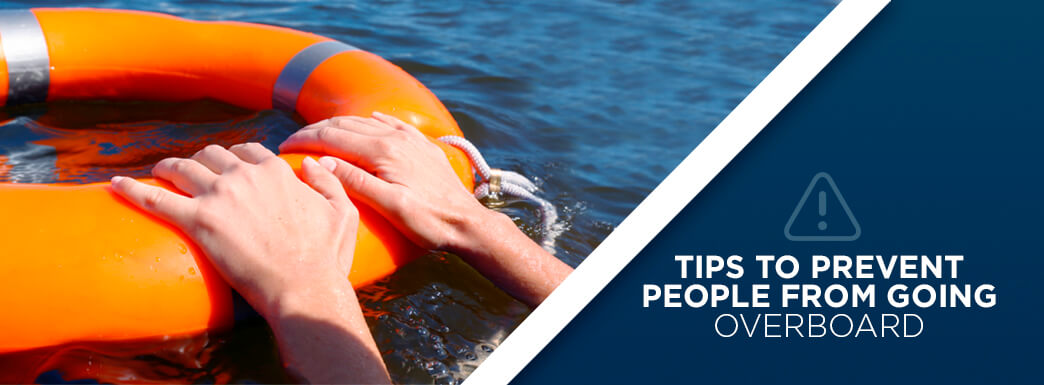
Most MOB situations on recreational boats are not caused by rough weather or choppy waters but are the result of irresponsible or careless behavior. By taking a few precautions, you can reduce the risk of someone going overboard. Here are a few tips to prevent passengers from falling off of your boat:
– Board one person at a time to prevent the boat from rocking too much.
– Step in the center of the boat when boarding for better stability.
– Add anti-slip tape on your boat deck near railings and edges.
– Keep the deck clean and uncluttered to eliminate tripping hazards.
– Inspect boat railings and replace any railings that are broken or weak.
– Only sit in designated areas and never sit on the bow or swim platform.
– Avoid standing or moving around when the boat is moving.
– Maintain at least three points of contact with the boat at all times — such as both feet and one hand.
– Use extra caution when fishing to stabilize yourself.
– Prevent pets from moving around too much on the boat.
– Plan ahead to avoid bad weather and dangerous water conditions.
– Instruct passengers on safe boating behavior before going out on the water.
By using these boating safety tips, you can prevent a man overboard situation to enjoy a safe and fun time on the water.
About Formula Boats
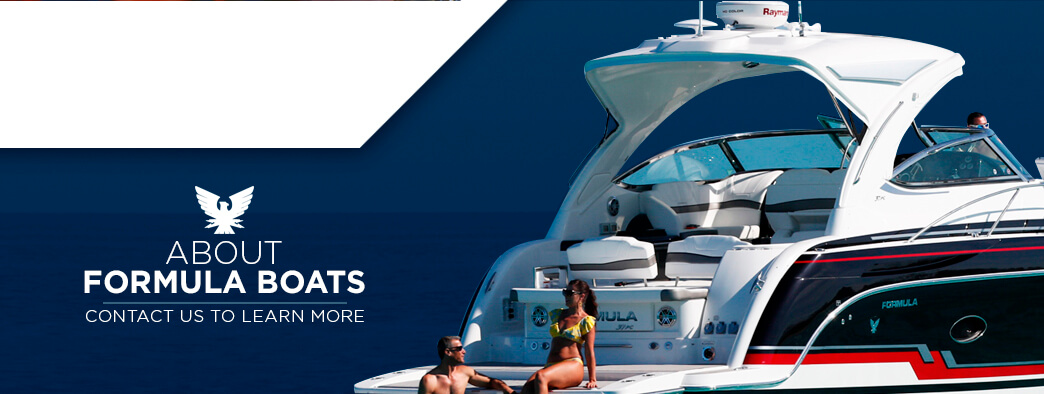
If you want to get out on the water this summer, you can’t go wrong with a premier powerboat from Formula. Designed for both safety and enjoyment, Formula boats are world-renowned for their advanced engineering and exhilarating performance. Our powerboat line-up includes popular day boats, like the powerful Formula Sun Sport or comfortable Formula Bowrider, and luxury boats for overnight adventures, like the spacious Formula Performance Cruiser and elite Formula 45 Yacht.
Family-owned since 1976, Formula stands for the very best in recreational boating. Our premier powerboats offer unparalleled quality and performance, backed by the exceptional customer service of the Porter family. With beautiful styling and countless customization options, you can design the boat of your dreams with Formula. Explore our world-renowned powerboats or contact us to learn more about Formula Boats.
